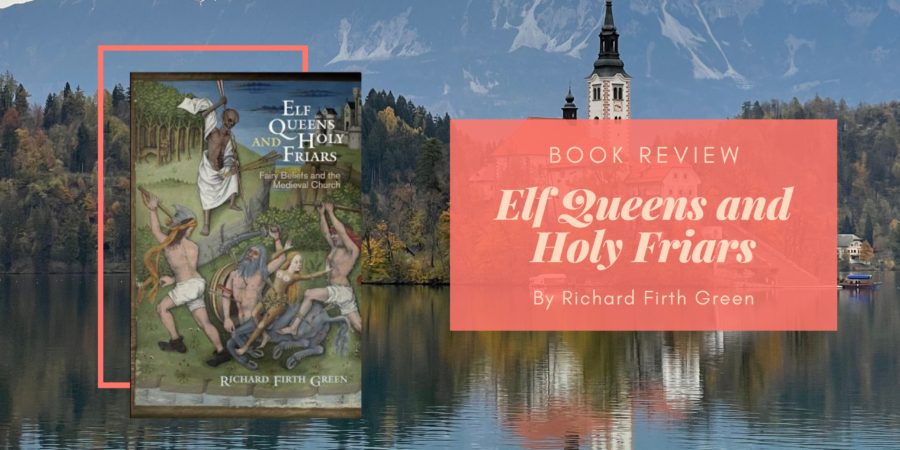Earlier this year, I read a book about the history of English magic and wondered, not for the first time, about the relationship between magic/folklore/fairies and the Church. So I was really excited when I found out that my questions have been at least partially answered in this book: Elf Queens and Holy Friars by Richard Firth Green. As the subtitle says, this book explores the relationship between fairy beliefs and the medieval Church.
Elf Queens and Holy Friars has five chapters:
- Believing in Fairies – how the Church treated the belief in fairies
- Policing Vernacular Belief – a continuation of the first chapter
- Incubi Fairies – Yes, incubi and succubi were originally seen as fairies!
- Christ the Changeling – a look at the concept of changelings and how that’s used in other situations, including depictions of Jesus in mystery plays
- Living in Fairyland – Is fairyland a sort of purgatory? Is it on earth?
While this book only has five chapters, it packs a lot of information and references a lot of medieval text. Essentially, what I took back from this book is that belief in fairies was widespread among people (even among the elite) and the Church tended to treat fairies as a form of devil. There was some ambiguity – with some thinking of fairies as less-evil demons who followed the fall instead of actively choosing it – by by and large, the Church disapproved of this belief. That said, it was not a relationship of “unrelieved antagonism”, and the book also looks at how vernacular culture made efforts to adjust its beliefs to Church orthodoxy.
For me, it was especially interesting to see how depictions of fairies changed over time. The biggest surprise was probably the way “changelings” were viewed (and how they came to be), as well as the fact that incubi were originally considered fairies! I also really liked that many different texts were referenced, and it’s easy to see that belief in fairies occupied a fairly ambiguous position in society; the Church may have been opposed to them, but many people held different beliefs and elite writers tended to try and balance these two opposing tensions.
I have to admit, even though I am very interested in this topic, this was not the easiest book to read. The tone of the text falls on the academic side, and more importantly, the older forms of English can be hard for the layperson to read. Green generally provides modern English translations for the French texts, but those in Middle English are presented as-is, which caused me some difficulty when reading.
Personally, I think this book is for two particular types of readers. The first is the huge fan of fairytales as a subject, who doesn’t mind academic works and who reads this to see how fairy belief developed and was treated in the medieval ages. I fall into this category. The second type of reader who I imagine would be interested in the book is an author who is looking to write a story where magic and belief meet and who wants to see how these tensions have been treated by other authors.

This sounds like an interesting book. I find it fascinating to see how views and interpretations change over time.
It was very fascinating! A bit heavy but definitely worth it if you’re into the history of folk and fairy tales!
Yes Christianity manipulated the details about the native beliefs into them being of the devil etc, it sounds as though this book really dives into that which is super fascinating. Another one I’d like to grab!
This one was really great – I think a lot of people gloss over the influence of Christianity on the belief in fairies (and vice versa) so it’s nice to see a book that tackles the subject. Hopefully someone will tackle this topic for other periods – I’d like to see how it continues to evolve!